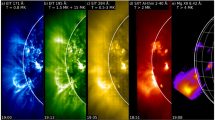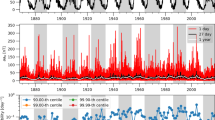Abstract
Numerical models of Cepheids have been computed with a range of effective temperatures and compositions. The amplitudes increase if the helium abundance increases or if the effective temperature decreases. The latter effect is contrary to observational data. The models also exhibit velocity amplitudes which are much lower than those observed.
Similar content being viewed by others
References
Cogan, B.C., 1980, Astrophys. J., 239.
Cox, A.N., Hodson, S.W., and Davey, W.R., 1976, Proceedings of the Solar and Stellar Pulsation Conference, A.N. Cox and R.G. Deupree, eds. (Los Alamos report LA-6544-C), pp. 188–201.
Deupree, R.G., and Varner, T.M., 1980, Astrophys. J., 237, pp. 558–562.
Flower, P.J., 1977, Astron. Astrophys., 54, pp. 31–39.
Stellingwerf, R.F., 1975, Astrophys. J., 195, pp. 441–466.
Stobie, R.S., 1968, Monthly Notices Roy. Astron. Soc., 144, pp. 485–510.
Author information
Authors and Affiliations
Rights and permissions
About this article
Cite this article
Cogan, B.C., Cox, A.N. & King, D.S. Full amplitude models of 15 day cepheids. Space Sci Rev 27, 419–424 (1980). https://doi.org/10.1007/BF00168328
Issue Date:
DOI: https://doi.org/10.1007/BF00168328




